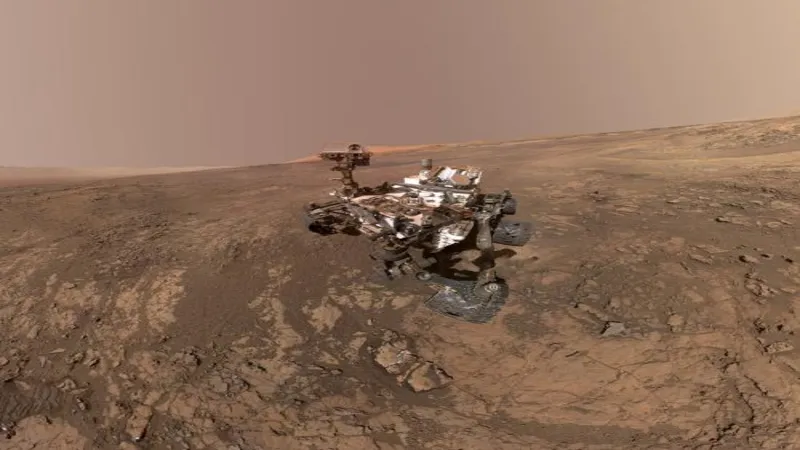
Noctilucent Clouds on Mars Captured by Curiosity Rover
As humanity’s robotic emissary on the Red Planet, NASA’s Curiosity rover has been unveiling the mysteries of Mars since its landing in 2012. Among its many groundbreaking observations, Curiosity recently captured the stunning beauty of noctilucent clouds, a phenomenon that has intrigued scientists for centuries. These ethereal clouds, typically found high in Earth’s atmosphere, also grace the Martian skies, particularly near the equator. With the ability to illuminate even as twilight descends, these clouds offer a captivating glimpse into Mars’ atmospheric dynamics and the ongoing quest to understand our neighboring planet’s weather patterns. Join us as we delve into the mesmerizing world of Martian noctilucent clouds and the science behind their formation.
| Feature | Details |
|---|---|
| Curiosity Rover | NASA’s rover studying Mars since 2012. |
| Noctilucent Clouds | Clouds that shine at night, consisting of ice crystals, observed at high altitudes (75-85 km) on Earth. |
| Location on Mars | These clouds typically appear near the equator of Mars. |
| Observation | Curiosity captures images of these clouds, which appear mostly white with a red hue. |
| Cloud Formation | Scientists can now predict the formation of these clouds, allowing for planned observations. |
| Gale Crater | Curiosity observes these clouds within Gale Crater, near the Martian equator. |
| Other Rovers | Other NASA rovers have not detected noctilucent clouds on Mars. |
| Scientific Mystery | Gravity waves may cool the atmosphere enough to form these clouds, which is still being studied. |
Introduction to Martian Clouds
Curiosity, NASA’s rover, has been exploring the surface of Mars since 2012. One of the most fascinating discoveries it has made is the presence of noctilucent clouds. These clouds are unique because they only appear in certain areas, especially near the equator of Mars. Understanding these clouds helps scientists learn more about the Martian atmosphere and its weather patterns.
Just like on Earth, clouds on Mars can tell us a lot about the planet’s environment. Noctilucent clouds, which appear after sunset, shine beautifully in the Martian sky. Their study not only captures the imagination of many but also provides crucial data for scientists trying to solve the mysteries of Mars.
Frequently Asked Questions
What are noctilucent clouds?
Noctilucent clouds are high-altitude clouds made of ice crystals. They shine at night, remaining lit by sunlight even as the ground gets dark.
Where can noctilucent clouds be found on Mars?
These clouds are mostly observed near the Martian equator, particularly within the Gale Crater area by NASA’s Curiosity rover.
How does NASA’s Curiosity rover study clouds on Mars?
Since arriving in 2012, Curiosity uses its Mastcam to capture images and monitor the Martian sky, including stunning views of noctilucent clouds.
Why are noctilucent clouds important for science?
Studying these clouds helps scientists understand Martian weather and atmospheric conditions, revealing clues about the planet’s climate and potential for habitability.
How do scientists predict the formation of clouds on Mars?
After years of observation, scientists can now predict when noctilucent clouds will appear, allowing them to plan their observations more effectively.
What colors do noctilucent clouds appear to be?
They mainly look white but can also show a red hue, especially during twilight, creating a beautiful sight in the Martian sky.
What causes clouds to form on Mars?
Gravity waves may cool the Martian atmosphere, allowing carbon dioxide to condense and form these thin clouds.
Summary
NASA’s Curiosity rover has been exploring Mars since 2012, capturing stunning images of noctilucent clouds near the equator. These unique clouds, similar to those seen on Earth, consist of ice crystals and shine brightly even after sunset. Recently, Curiosity’s cameras recorded a breathtaking view of these clouds, which scientists can now predict to appear at specific times every year. Atmospheric scientist Mark Lemmon noted that observing these clouds has become reliable, helping researchers understand Martian weather better. Curiosity continues to unravel the mysteries of Mars, including the formation of these fascinating clouds.